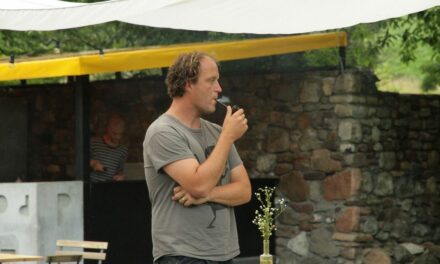They say that Hungary welcomes the homecoming of its youth scattered around the world, and this is true. But not always.
Because, for example, the dancer and choreographer Dávid Gergő Farkas could have stayed in Stockholm, the choreographer Júlia Varva in Amsterdam, and Balázs Oláh, the former folk dance student of the University of Dance, in Salzburg, instead of all three moving home a few months ago, and last Saturday they held the first rainbow folk dance their occupation.
444 "We would preserve traditions with queer gossip instead of sexist gossip" , and the author concludes with this:
"The organizers are planning a self-defense session as the next event in the movement-focused LGBTQ+ workshop series."
I'm not the only one who got a smile from that sentence, am I?
But joking aside, it's worth scrutinizing intentions even more fiercely, once we've overcome the condensing of the concepts of "queer" and "tradition" into one sentence. According to Júlia Vavra
"Hungarian folk dance is characterized by heteronormative structures",
since the man leads, the woman follows him or takes on a less dominant role. The choreographer admits that both roles are exciting, "but it is important that anyone can try their hand at this and that as well, you can learn from both". Finally, he adds that
"we are also part of the Hungarian youth, why can't we write gossip about our topics and our problems? Respecting traditions is not just about learning someone else's hundred-year-old whispering, it's about carrying on the customs and, like my predecessors, I invent my own whispering."
Now, the situation is that society, not only Hungarian, but all of them, without exception, is heteronormative, the whole world is heteronormative, as psychiatrist Robert Spitzer once said: "we are structured according to the program of heterosexuality". Because - and I know this is bad news for prominent representatives of the LGBTQ lobby - if it weren't for this, humanity would have died out a long time ago, and consequently they wouldn't exist either.
But the statement of the deconstructor choreographer girl (or any section of the LGBT), which complains that in folk dance the man leads and the woman follows, is similarly problematic. With this, he suggests that the woman adds almost nothing to the joint production, she almost doesn't even have to know how to dance, just follow the man and that's it. And this suggestion is not helped by the fact that he generously adds, "both roles are exciting", contradicting of course his previous statement, because if he really found them equally exciting, then with this momentum he would leave the traditional roles alone and not try to just subtly recolor them first , and then radically transform it, smash it all in Hungarian. Because this is always the end.
The same is the case with whispering, if we have such a vivid imagination that, let's say, trance whispers appear before our mind's eyes. By the way, gossiping can also be "brutally sexist", in ordinary language, Gergely Szilvay quotes one or two folk song lyrics from Gyimes or Csíki in his article published on Mandiner; if you have the time and inclination, try to make them gender-conforming, we wish you the best of luck.
So the big plan is, just like in the case of folktales - why can't they come up with something original, why do they have to constantly smear something that belongs to the majority and is considered beautiful and good? – to rewrite the heteronormative, oppressive (and obviously racist) whispers, then the girls clap, the men and the women dance, and then the characters are rechristened as leader and led, but it will not be very egalitarian, since it appears in oppression, so in the end there will be neither leader nor led, and something will be replaced by nothing. But the deconstruction cannot end here, because why should couple dances be danced in pairs? It's pure nonsense, from now on they can dance four or five, or fifteen, or rather a variable number, always adapting to the number of newly appearing genders, seventy of them.
So, there are plenty of tasks facing our newly returned youth, but if we can suggest, they should try to keep the above-mentioned self-defense occupation within a traditional framework - who knows when they might need the knowledge acquired there and not yet deconstructed.
The featured image is an illustration / Source: origo.hu












